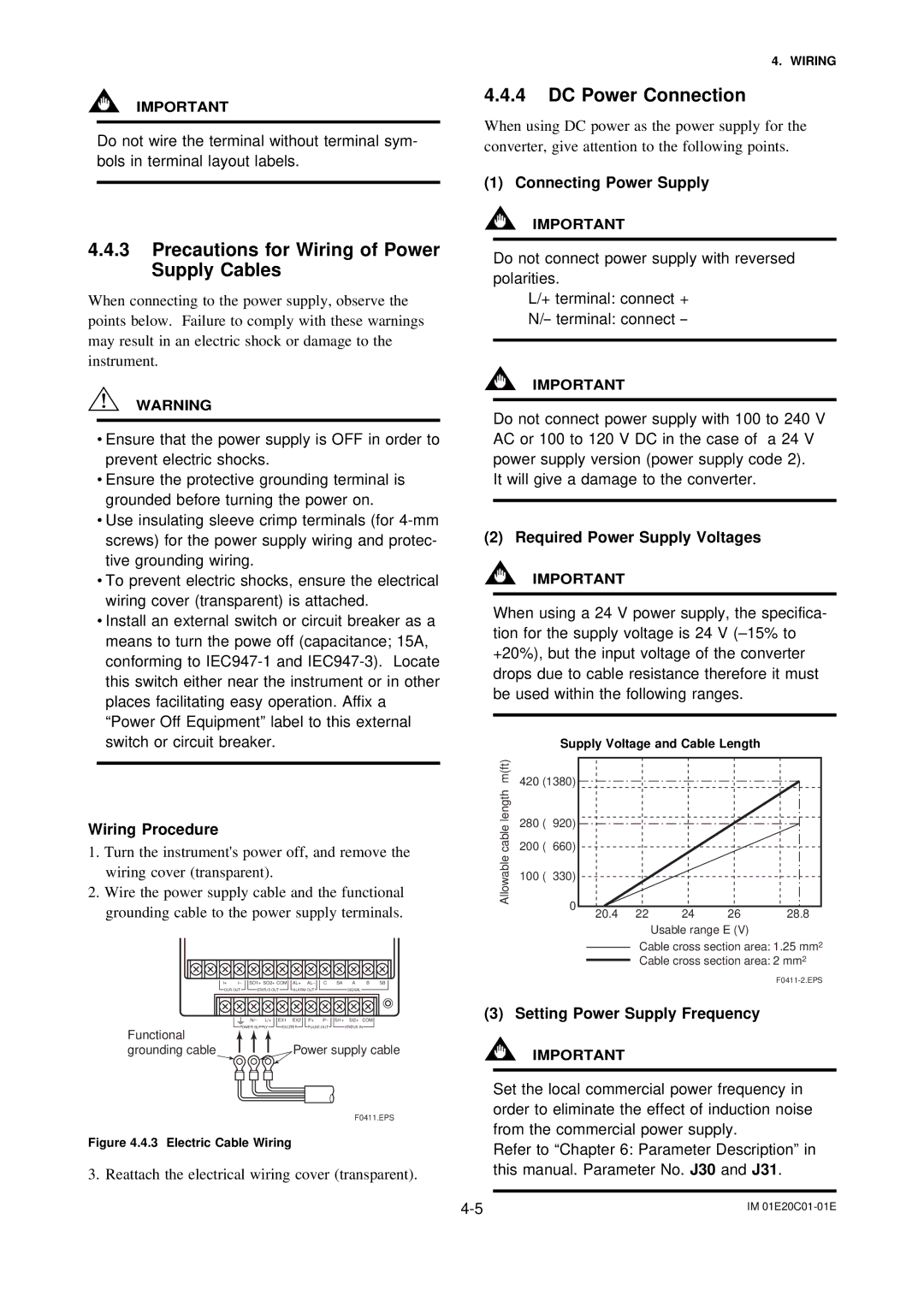
IMPORTANT
Do not wire the terminal without terminal sym- bols in terminal layout labels.
4.4.3Precautions for Wiring of Power Supply Cables
When connecting to the power supply, observe the points below. Failure to comply with these warnings may result in an electric shock or damage to the instrument.
WARNING
•Ensure that the power supply is OFF in order to prevent electric shocks.
•Ensure the protective grounding terminal is grounded before turning the power on.
•Use insulating sleeve crimp terminals (for
•To prevent electric shocks, ensure the electrical wiring cover (transparent) is attached.
•Install an external switch or circuit breaker as a means to turn the powe off (capacitance; 15A, conforming to
Wiring Procedure
1.Turn the instrument's power off, and remove the wiring cover (transparent).
2.Wire the power supply cable and the functional grounding cable to the power supply terminals.
I+ I– | SO1+ SO2+ COM | AL+ | AL– | C | SA | A | B SB | |
CUR OUT | STATUS OUT | ALARM OUT |
|
| SIGNAL |
| ||
| N/– L/+ | EX1 | EX2 | P+ | P– | SI1+ | SI2+ | COM |
POWER SUPPLY | EXCITER | PULSE OUT |
| STATUS IN | ||||
Functional |
|
|
|
|
|
|
|
|
grounding cable |
|
| Power supply cable | |||||
4. WIRING
4.4.4DC Power Connection
When using DC power as the power supply for the converter, give attention to the following points.
(1) Connecting Power Supply
IMPORTANT
Do not connect power supply with reversed polarities.
L/+ terminal: connect +
N/– terminal: connect –
IMPORTANT
Do not connect power supply with 100 to 240 V AC or 100 to 120 V DC in the case of a 24 V power supply version (power supply code 2).
It will give a damage to the converter.
(2) Required Power Supply Voltages
IMPORTANT
When using a 24 V power supply, the specifica- tion for the supply voltage is 24 V
Supply Voltage and Cable Length
m(ft) | 420 | (1380) |
|
|
|
| |
length |
|
|
|
| |||
280 | ( | 920) |
|
|
|
| |
cable |
|
|
|
| |||
200 ( | 660) |
|
|
|
| ||
Allowable | 100 | ( | 330) |
|
|
|
|
|
| 0 | 22 | 24 | 26 | 28.8 | |
|
|
| |||||
|
|
| 20.4 | ||||
Usable range E (V)
Cable cross section area: 1.25 mm2
Cable cross section area: 2 mm2
(3) Setting Power Supply Frequency
IMPORTANT
F0411.EPS
Figure 4.4.3 Electric Cable Wiring
3. Reattach the electrical wiring cover (transparent).
Set the local commercial power frequency in order to eliminate the effect of induction noise from the commercial power supply.
Refer to “Chapter 6: Parameter Description” in this manual. Parameter No. J30 and J31.
IM |
